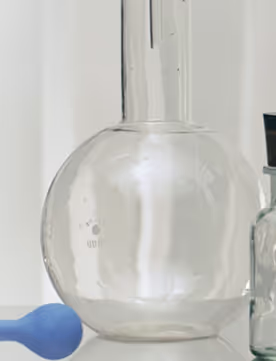Polycystic ovary syndrome (PCOS) is a metabolic and hormonal condition that affects 6%–12% of women of reproductive age in the United States, making it one of the most common reproductive hormone disorders in young women. However, the effects of PCOS also extend far beyond the reproductive system, affecting a woman’s future risk of chronic health conditions, including diabetes and cardiovascular disease. (Source)
Autoimmune disease affects an estimated 50 million Americans, and 80% of those affected are women. Autoimmune disease occurs when immune cells mistakenly attack healthy cells and tissues in the body, causing dysfunction either in a specific organ (such as the thyroid gland with Hashimoto’s thyroiditis and Grave’s disease), or throughout the body (as with systemic lupus erythematosus). (Source)
While PCOS and autoimmunity may seem like entirely different conditions, a growing body of research suggests they may share a connection. Read on to uncover the relationship between PCOS and autoimmune disease, and learn 4 healthy nutrition habits to help you live well with these conditions.
Causes of PCOS
What causes PCOS? Research indicates four primary causes: genetics, hormonal imbalances, insulin resistance, and environmental factors.
Genetic Factors
Several genetic factors may put you at risk for PCOS. Genes involved in ovarian and adrenal hormone production, genes that mediate the effects of sex hormones, and genes involved in insulin secretion and action all appear to play roles in PCOS. (Source)
It’s important to understand that having these genes does not guarantee you’ll experience PCOS. However, these genes may put you at a disadvantage in our current environment, which is rife with processed foods and environmental toxins, factors that may “activate” the genes involved in PCOS. (Source)

Hormonal Imbalance
PCOS is characterized by several hormonal imbalances, including imbalances in androgens, luteinizing hormone, follicle-stimulating hormone, and anti-Mullerian hormone. Let’s discuss each of these hormonal imbalances in turn.
- androgens. Androgens are defined as hormones required for the development and maintenance of male sexual characteristics and features. This group of hormones includes testosterone and DHEA. However, both men’s and women’s bodies produce androgens; men just produce vastly more. Excess androgens, including high levels of testosterone and DHEA, are a key feature of PCOS, and appear to originate from excessive ovarian androgen production, elevated insulin levels, and insulin resistance. When androgens are elevated in women with PCOS, symptoms such as hirsutism (excessive hair growth), acne, and androgenic hair loss (also known as “male pattern balding”) may result. Elevated androgens are referred to as “hyperandrogenism.” (Source, Source)
- luteinizing hormone (LH) and follicle-stimulating hormone (FSH). Luteinizing hormone is made in the brain and controls the release of eggs from the ovaries, known as ovulation. Follicle-stimulating hormone is also made in the brain and stimulates the ovaries to release a single mature egg each month, with the designated egg maturing inside a tiny sac called a follicle. High LH and low FSH in PCOS impairs ovulation, allowing numerous small undeveloped follicles called “cysts” to continue growing in the ovaries. The term polycystic in polycystic ovary syndrome is derived from poly (meaning multiple) and cystic (meaning follicles). (Source)
- anti-Mullerian hormone (AMH). This hormone is made in the ovaries of reproductive-age women and controls follicle formation. Women with PCOS tend to have higher levels of AMH than women without PCOS. (Source)
- progesterone: Progesterone is a crucial reproductive hormone made by the corpus luteum, which is formed in the ovary after ovulation. Women with PCOS who are not ovulating don’t get the post-ovulation boost in progesterone and may experience low progesterone levels. In addition, research suggests that women with PCOS may be less sensitive to the effects of progesterone. (Source)
Insulin Resistance
Insulin is a hormone your pancreas produces that moves glucose (sugar) from the blood into cells, where it is needed for energy. Insulin resistance is when your body’s cells become less sensitive to insulin, making it challenging to provide them the glucose they need. This may also trigger the pancreas to churn out even more insulin in an attempt to usher glucose into cells. Too much insulin can promote inflammation, impair ovulation, and cause the ovaries to produce testosterone, making insulin resistance a key component of PCOS. Left unmanaged, insulin resistance can also drive the development of type 2 diabetes and cardiovascular disease later in life. (Source, Source, Source)
Not everyone with PCOS has insulin resistance, but insulin resistance is quite common in women with this condition. According to the research, 64% of obese women and 20% of non-obese women with PCOS are insulin resistant. (Source)
Environmental Factors
Another factor that may increase your risk of developing PCOS is early life exposure to hormone-disrupting chemicals. These chemicals are called “endocrine disruptors” because they interfere with the normal functioning of your endocrine, or hormonal, system.
Research indicates that prenatal exposure to endocrine disruptors and exposure during childhood can alter hormone communication throughout the body later in life, predisposing a woman to PCOS. Environmental toxins involved in PCOS include bisphenol A (BPA), found in the lining of canned foods, plastics, and thermal receipt paper, and phthalates, found in personal care products and children’s toys. (Source)

Symptoms of PCOS
What are the symptoms of PCOS? Possible symptoms include:
- missed, irregular, or very light periods
- ovaries with many cysts
- excess body hair, especially on the face, stomach, or chest
- weight gain, especially around the abdomen
- acne
- male pattern baldness (androgenic alopecia) or thinning hair
- skin tags, which are small pieces of excess skin
- dark or thick skin patches known as acanthosis nigricans in the armpits, nape of the neck, and other skinfolds
(Source)

.avif)
%20(1).avif)
%20(1).avif)

.avif)












.avif)

%2520(1).avif)



